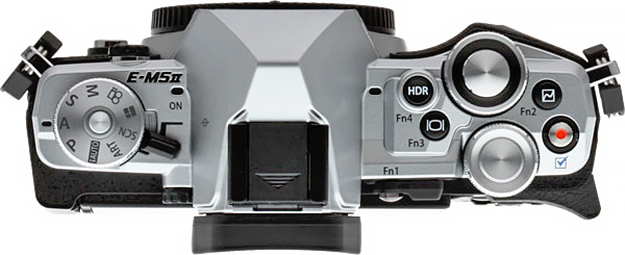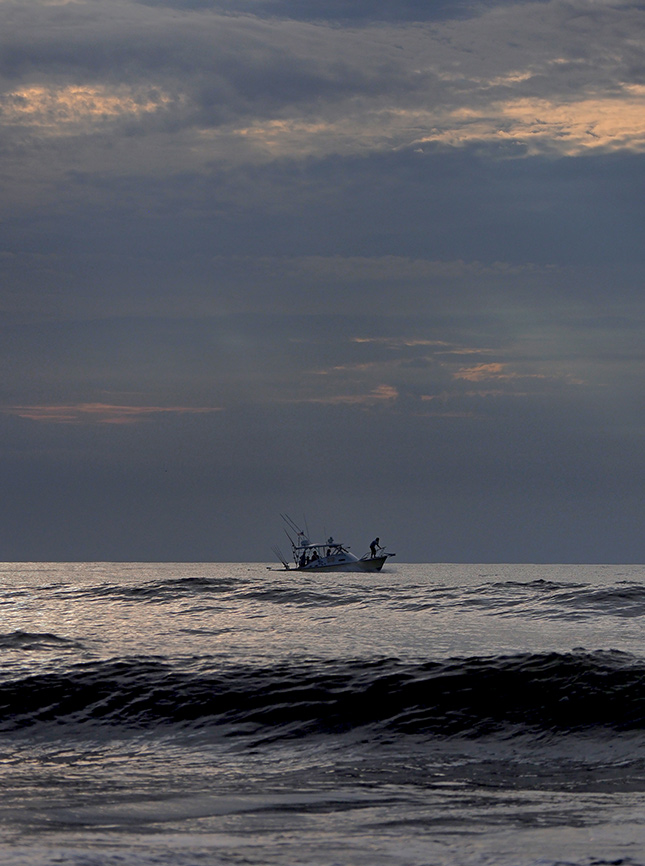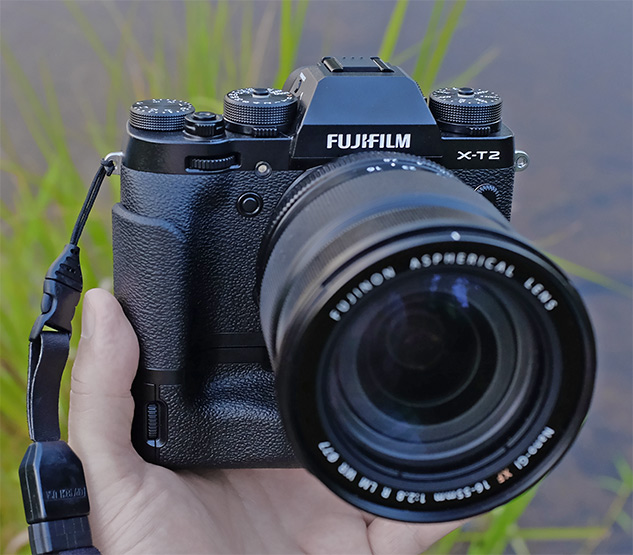Confusion in the camera industry: One reviewer tries to make sense of all the latest offerings
posted Saturday, October 27, 2018 at 7:01 AM EDT

I've been reviewing cameras and lenses for you for about six years, and Imaging Resource has been offering you reviews for more than 20 years. And in all of that time there has likely never been a more interesting time in the camera industry!
Of course, given the myriad of exciting camera offerings lately, both in the full-frame mirrorless segment and also in the medium-format world, it's perhaps also never been a more exciting time to be a photographer. So, why the confusion?
Well... Size and weight for the most popular models seem to be growing in general. A lot. Oh, and so is cost. Meanwhile, it seems that the middle-ground models which I love the most are becoming rather sparse. That's the start of why I am confused, and I'm going to get to the bottom of the confusion by writing it out, and see where I get. If you're confused too, we'll be confused together for a bit, and then we'll see where it all leads.
Different strokes
Before we get too deep, let me say that I am a big fan of product diversity. A big, big fan. I can often stray into fringe territory with my own personal needs in various electronics segments, and if everything were vanilla then I'd be out of the game. Give me diversity, or give me creative death!
And I can understand why terrific products cost a lot of money to produce, especially because if they are also niche, they may not sell to mass markets, and therefore the costs of production are simply too high. I've paid a large percentage of my own personal free spending money on niche electronics many times over, so I have put my money where my mouth is on this. (My wife nodded affirmatively as she read that.)
And the confusion? I'm getting there, so please bear with me. You see, as reviewers we were excited when we learned earlier this year that Nikon was coming out with a full-frame mirrorless camera. And why shouldn't we be? As reviewers and as photographers, choices are a good thing. Then Canon came out with one, and then Panasonic came out with a hint of one to come. And then Fujifilm came out with something different; something even larger, as did Zeiss.
This all happened in a very short span of time, and in that time, the new offerings "in the middle" for size, weight and price were, um, exceedingly limited in number. In short, we started scratching our collective heads and calling 2018 "The Year of Big" here at IR headquarters.
So I suppose the confusion begins with this seeming discrepancy. Is this just a coincidence, or is the industry moving towards bigger, heavier, and more expensive gear as a general rule? ...It's a fair question!

As mentioned earlier, I really do love diversity. But personally, I don't shoot with heavy cameras much, if at all. My favorite type of photography is "on the go"... I love to roam the beaches and shoot for hours (or days!), or on mountain hikes, or just wandering around on hilltops with people who want good portraits of themselves and their families. And I like to wander sans tripod. That's my version of photographic fun, and it keeps me interested in the game. I want quality, absolutely, just not quality that's super-heavy or overly expensive. It just wears out my biceps, my neck and my wallet as compared to the whole "in-the-middle" product segments. To each their own, but that is where I stand. (And shoot!)
We are paid to be unbiased as reviewers, and none of us would pledge allegiance to any particular brand or form-factor. We aim to consider each camera equally, placing ourselves in the shoes of the photographers at which each model is aimed. But we're also human and therefore have a right to some personal favorites, especially on our own free weekend time. For me, the pairing of the Olympus E-M1 Mark II and 12-100mm f/4, for instance, is a magic beach-combing rig. Just spectacular. At just 40 ounces (1,134g) combined, the size and weight are just right, and I can stroll for hours with that rig and not get worried about weight. In short, I can "forget about life for awhile" as the old classic Billy Joel song says.
I also love the Fuji X-T series and all the amazing glass available, and find the portrait-shooting potential to be stellar. And I love the Nikon D500 paired with choice Nikkor glass for sports and wildlife, and of course portrait work too. And I love many other rigs as well, such as the Panasonic G9 paired with the 50-200mm f/2.8-4. So there's a brief glance at what moves me as a photographer from four well-known brands. And what is my point with sharing all that, you ask?
Weight. And cost. For this middle-class, enthusiast photographer. Are these types of rigs going away? That is what worries me and is confusing me these days. (There. I've gotten it off my chest.)
Look, I'm not knocking any of the new full-frame mirrorless rigs, and I'm certainly not knocking the awesome Fuji GFX line! For portrait and landscape work, it's the absolute bomb, and for professional work that's one of the rigs I'd want to have in my arsenal. But I'm not talking about professional photography here, but my own personal shooting. In other words, as an "advanced enthusiast photographer" who never sits still when shooting, I just know that for most work I can already get great quality without the bulk or price.
The Fuji X-T3 was just released and is hugely popular on our site, so the argument that these "in-the-middle" rigs might go away for good is, perhaps, not an overly strong one. But it is still my fear given all these new huge and expensive offerings pouring forth in such droves! And especially since the X-T3 is the only one from the middle camp as of late, furthering my concern.
And one more thing... where did Sony's APS-C cameras go? I fell in love with their NEX line during the NEX-6 and NEX-7 days. I mean LOVE! I wish they hadn't changed the name of the line, because symbols are confusing -- just ask the artist known as Prince, who was formerly known as a symbol -- but the line lives on, or at least it did. Where is the A7000? Has it been scrapped so they can chase more full-frame models to keep up with the Joneses? I sure hope not. Those full-frame mirrorless bodies may be relatively small, but the glass is usually big and the rigs are fairly expensive. That's a reality which no argument can counter, in my mind.
One last notion on that subject is that the tiny-yet-powerful E-PM line from Olympus and the GM line from Panasonic appear to be long gone in the annals of history, furthering my fear that smaller is no longer preferred by the masses. And their demise exists even though those cameras could shoot high-quality images and bear some ISO strain along the way. I loved them.
Mirrorless was intended to bring us quality in smaller packages, and that's part of the allure of Micro Four Thirds for me, and APS-C as well. It's why those four rigs mentioned above are such big "go-to" rigs for me personally, across most all shooting situations. But when a sensor is full-frame, even if the camera body is fairly small (such as with the new and excellent Nikon Z7) the appropriate lenses still must be large due to physics (although Nikon is leading the charge to combat that with their PF lenses, but even those are still fairly expensive).
By the numbers
Let's talk actual weight figures for a bit, as that will likely give a lot more perspective to my whole point here. To get a sense for how much the rigs weigh that I've mentioned above, I did some quick calculations and, using ounces for the US and grams for the rest of the world, I've found what I consider to be my basic comfortable benchmark for weight in the field. That's roughly 55 ounces (1,600g) for the body and lens combination. In short, that's 3.5lbs, and that's about the top end for me and my personal comfort zone.
The Olympus E-M1 II + 12-100mm f/4 "beach-combing-rig" is a mere 40 ounces in total, so it falls well within that mark. Moving to classic sports shooting rigs gives us an easier way to compare apples to apples, as the Fuji X-T2 alongside the XF 50-140mm f/2.8 comes out to 59 ounces (1,672g). That's just slightly over my comfort zone, but the cool thing is that the camera and lens are almost identically weighted, so the balance is terrific as both weigh in at roughly 30 ounces. The same thing is true of the Olympus beach-combing rig, which comes out to right about 20 ounces each. Nice balance!
You can get a lighter sports-shooting rig with Micro Four Thirds, as the E-M1 Mark II paired with the 40-150mm f/2.8 comes to just 47 ounces (1,332g) while the Panasonic G9 + 35-100mm f/2.8 II tips the scales at just 36 ounces (1,020g). This equates to a lot of firepower for the associated weight, while still offering bright lenses at your disposal for cloudy days and shooting at dusk.
Looking into the full-frame world for comparison, we see the current Nikon, Canon and Sony 70-200mm f/2.8 top-end sports models weighing in at roughly 50 ounces (1,418g), which is already almost to my own personal maximum allowed weight for comfort without a tripod, even with no camera body attached. Obviously with sports shooting you may want a monopod along, but again I'm talking about casual shooting here, like my kids' soccer games, not professional-grade outings.
So even with the relatively low body weight of the new full-frame mirrorless cameras (roughly 24 ounces for the Z7 and EOR R) we're still looking at about 75 ounces (2,125g) total rig weight with the lens adapter. That's fine for professional shooting but definitely over and above my personal desired comfort zone. And, again, I'm really not interested in spending more than $2k for a body as an "enthusiast" camera. Lenses tend to last longer and therefore have more leeway, but that's once again yet another issue for me with the direction things seem to be heading these days.
Summing it up
As a dedicated enthusiast photographer, I yearn for the middle ground for weight and price, while still needing a certain minimum level of overall image quality. I have found this formula in many camera rigs, and yet based on the general trend for product offerings from 2018, I fear they are going away! Smaller ILC's have already started disappearing, and the middle ground cameras just aren't being released very often anymore compared to the larger and more expensive cameras.
Nobody that I know owns a camera crystal ball, and we reviewers aren't always privy even to sales figures of the various models that we review for you. But we do of course keep a close eye on what's popular on our site and similar review sites, as well as on the seller affiliate rankings for what's being sold out there in camera-land. Perusing these various numbers, it is my guess that the middle ground for weight and cost that I enjoy shooting with is not completely going away anytime soon.
And yet, the sheer number of those big-sensored rigs hitting our doorstep in short order has caused my psyche to do a little knee-jerk reaction to be sure, since the middle ground has also been mostly on hiatus. The simple fact for me as a photographer with 30+ years shooting experience under my belt is this: I don’t want to haul around more than roughly 3.5lbs of gear at any given time. That's just my own personal threshold for "OK, that's enough." But I do want the kind of quality I've come to expect from rigs like the ones I've mentioned above.
Are they all being replaced by bigger, heavier, more expensive rigs? Is the Goldilocks principle of "Just Right" dying off? I sure hope not. My neck and my wallet are twitching just thinking about it.
• • • • •
(How about you? Confused about where cameras like the Olympus E-M5 Mark III or the Sony A7000 are? Worried that the prized middle ground is going away? Or maybe you think I'm just bonkers? Sound off in the comments section below!)







